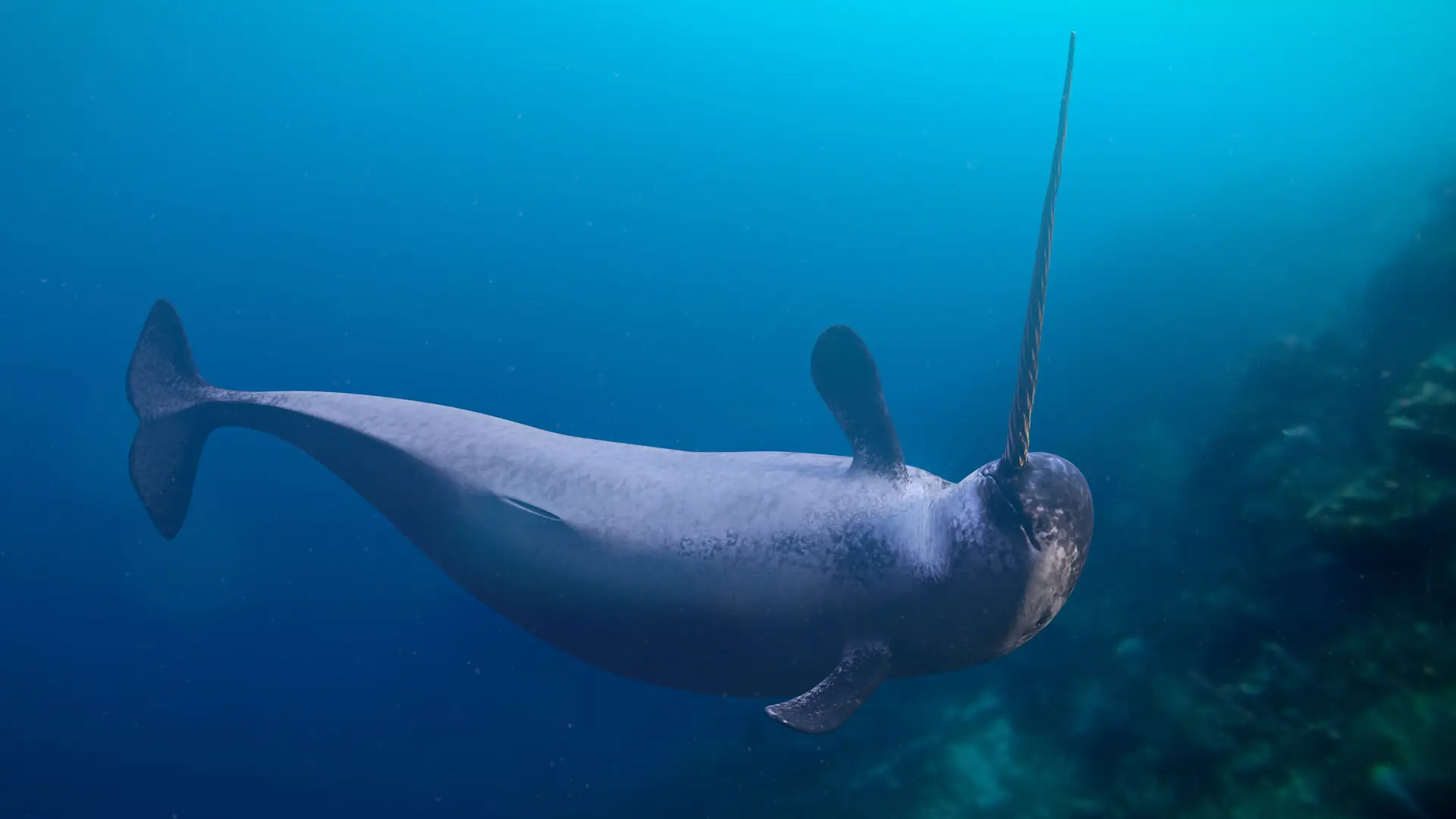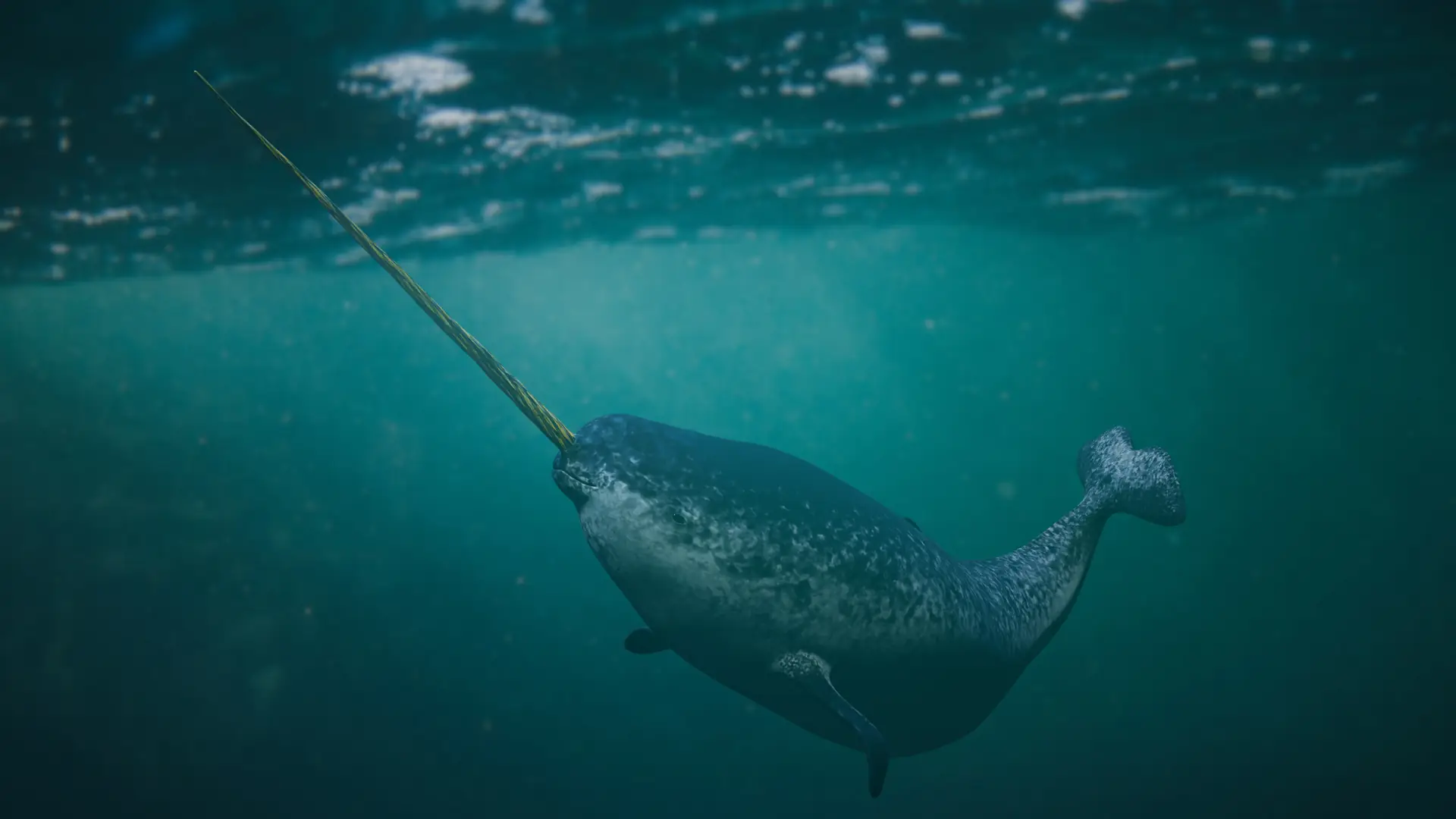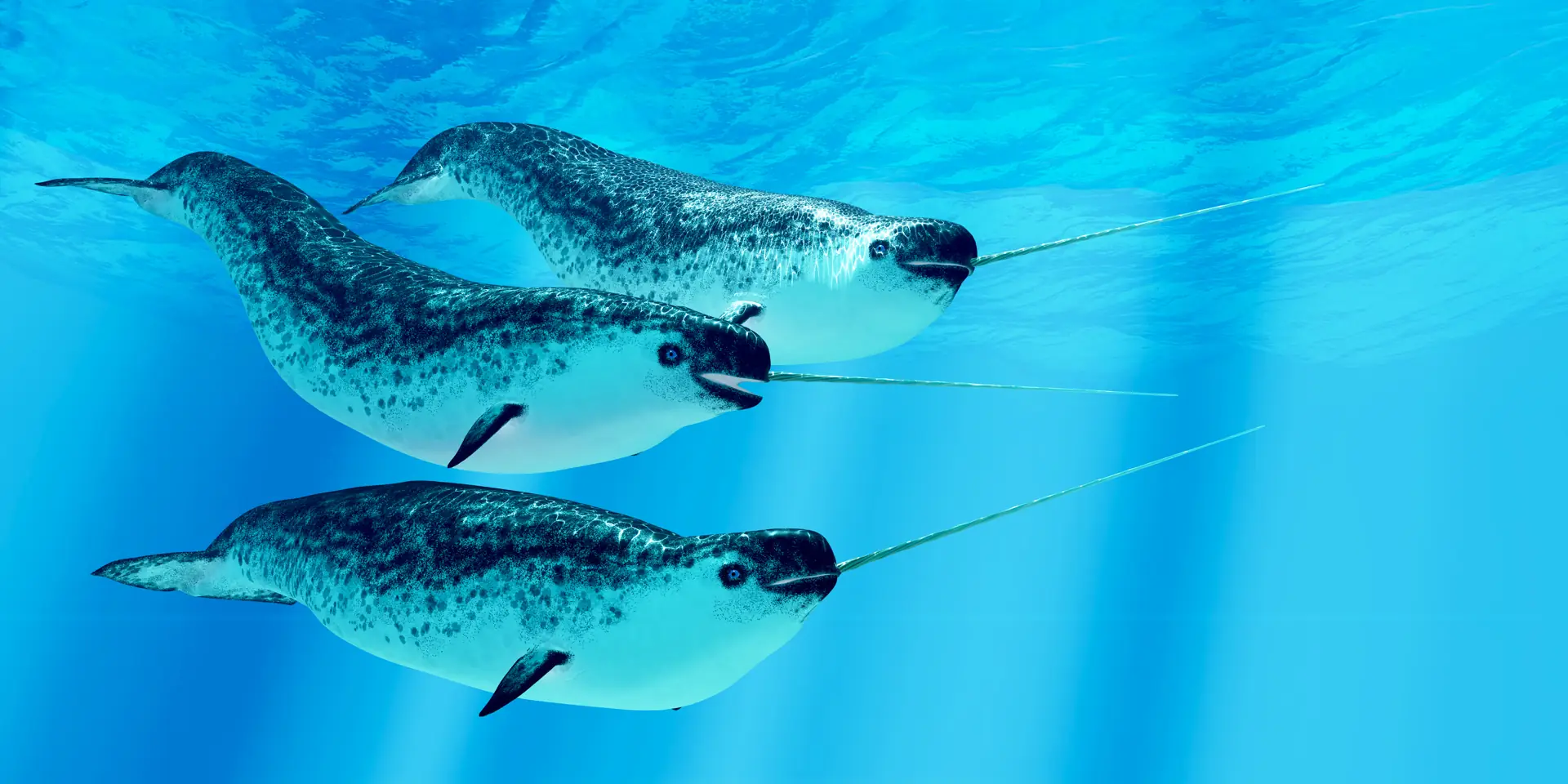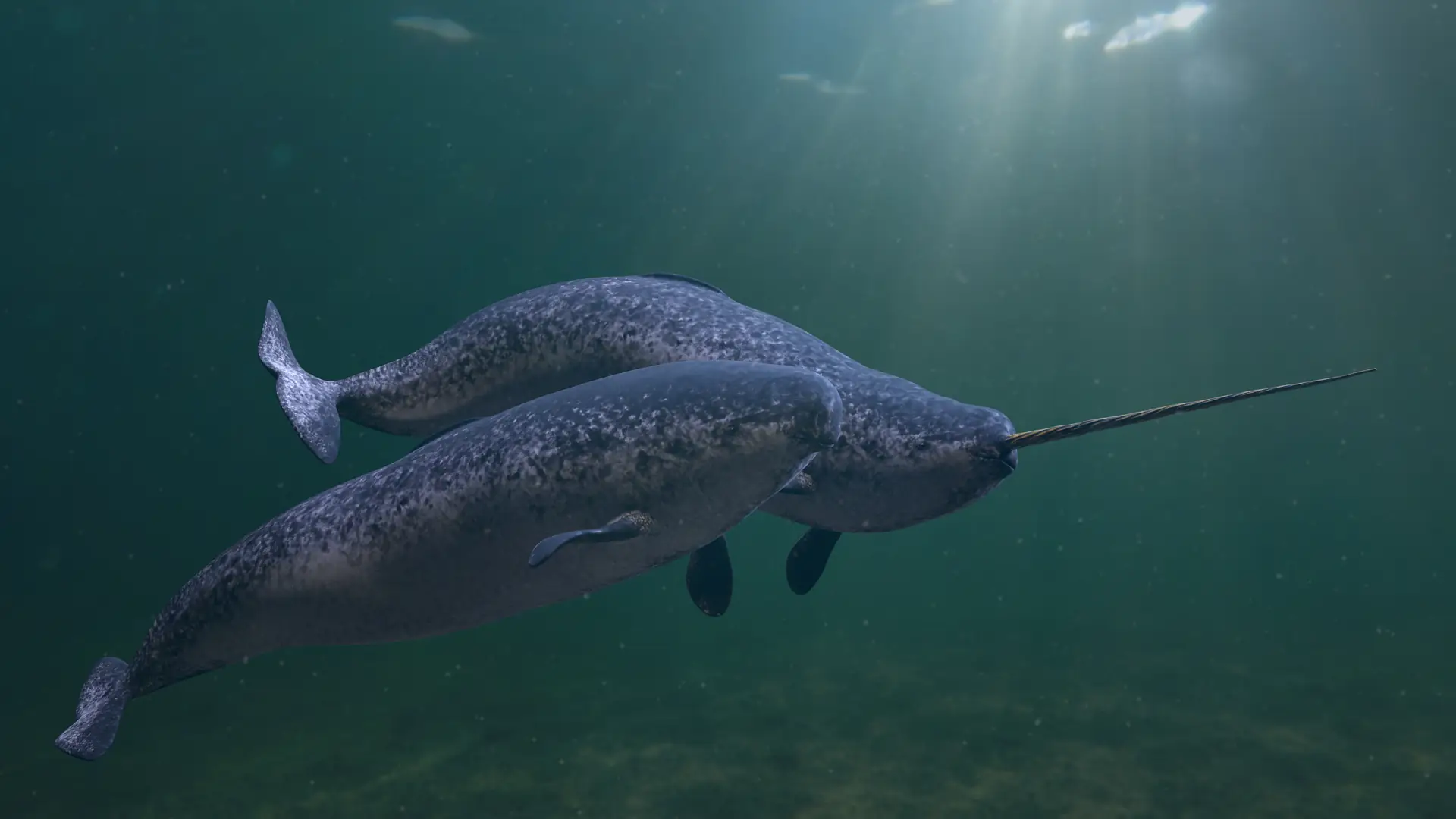Table of Contents
Have you ever wondered what makes the narwhal so fascinating? Known as the unicorns of the sea, narwhals captivate the imagination with their mysterious tusks and elusive nature. In this article, we will dive deep into the world of narwhals, exploring their habitat, diet, behavior, and much more. By the end of this read, you’ll understand why narwhals are one of the most unique and intriguing creatures in the ocean.

What is a Narwhal?
Narwhals (Monodon monoceros) are medium-sized whales best known for their long, spiral tusk that protrudes from the males’ heads. This tusk, actually an elongated upper left canine, can grow up to 10 feet long. Despite their mythical appearance, narwhals are real and belong to the cetacean family, which includes dolphins and whales.
Physical Characteristics
- Size: Adult narwhals typically measure between 13 to 18 feet in length, excluding the tusk.
- Weight: They can weigh up to 3,500 pounds.
- Coloration: Narwhals are born with a grayish-blue color that lightens with age, becoming mottled white and black.
- Summer: During the warmer months, narwhals migrate closer to coastal waters and fjords, where they are more accessible for study and observation.
- Winter: In the colder months, they move offshore to deeper waters, often under thick ice packs.

Habitat: Where Do Narwhals Live?
Narwhals inhabit the Arctic waters of Canada, Greenland, Norway, and Russia. They are particularly adapted to life in the icy seas, often found in deep, offshore waters.
Seasonal Movements

Diet: What Do Narwhals Eat?
Narwhals have a varied diet, primarily consisting of fish, squid, and shrimp. Some of their favorite prey include Greenland halibut, Arctic cod, and cuttlefish.
Hunting Techniques
Narwhals use echolocation to locate their prey in the dark, murky depths of the ocean. They are known to dive to remarkable depths, sometimes reaching up to 5,000 feet, to find food. Their tusks, while impressive, are not used for hunting but may play a role in sensory perception or social interactions.

Social Behavior
Narwhals are social creatures, typically found in groups called pods, which can range from a few individuals to hundreds. They communicate using a variety of clicks, whistles, and knocks.
Reproduction
Female narwhals give birth to a single calf after a 14-month gestation period. Calves are nursed for about a year and reach maturity at around 8 to 10 years of age.

Conservation Status: Are Narwhals Extinct?
Narwhals are not extinct, but they are considered near-threatened due to various factors such as climate change, habitat loss, and hunting. Conservation efforts are in place to protect these magnificent creatures and their habitats.
Learn More!
Narwhals are indeed the unicorns of the sea, blending myth with reality. Their unique physical characteristics, fascinating behaviors, and the challenges they face make them an extraordinary subject of study and admiration. By learning about narwhals, we gain insights into the delicate balance of our marine ecosystems and the importance of preserving them.
To delve deeper into the world of animals, explore our mammals category, or check out our detailed articles on fascinating species such as the Komodo dragon and the whale shark. Each of these creatures has its own unique story and plays a vital role in the biodiversity of our planet.
F. A. Q. about Narwhals
Are Narwhals Real?
Yes, narwhals are real. They are a species of whale known for their distinctive long tusk, often referred to as the “unicorn of the sea.”
Are Narwhals Extinct?
No, narwhals are not extinct. However, they are classified as near-threatened due to environmental changes and human activities.
What is a Narwhal?
A narwhal is a type of Arctic whale distinguished by the long, spiral tusk that males possess. They are part of the cetacean family, which includes dolphins and whales.
Where Do Narwhals Live?
Narwhals live in the Arctic waters around Canada, Greenland, Norway, and Russia. They migrate between coastal areas in the summer and deeper offshore waters in the winter.
What Do Narwhals Eat?
Narwhals primarily eat fish, squid, and shrimp. They use echolocation to hunt their prey in deep, dark waters, diving up to 5,000 feet.


